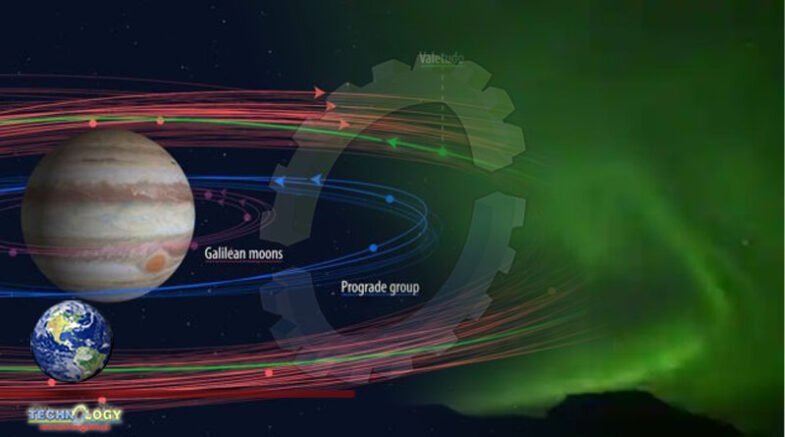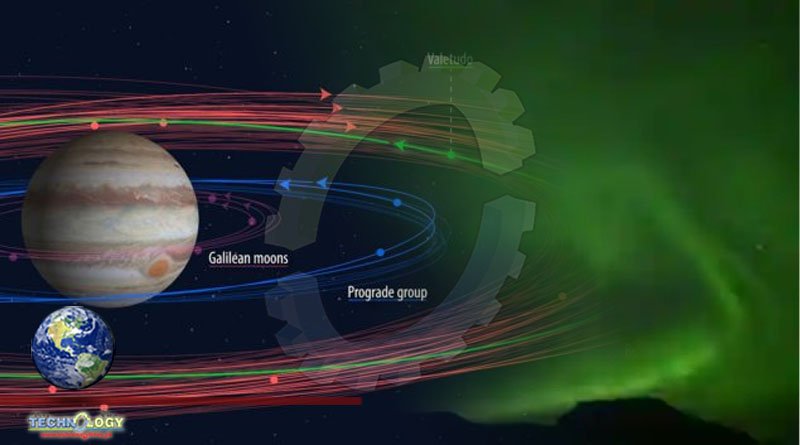Jupiter’s mysterious “energy crisis” that has puzzled astronomers for 50 years could be caused by auroras, new observations suggest.

Jupiter’s mysterious “energy crisis” that has puzzled astronomers for 50 years could be caused by auroras, new observations suggest.
The largest planet in our solar system has long been known to be remarkably warm, despite its great distance from the sun. Jupiter lies more than 5 astronomical units, or sun-Earth distances away (1 AU is million miles (150 million kilometers).
There’s so little sunlight that far from the sun that Jupiter’s upper atmosphere should be frigid, scientists estimate it should be about -100 degrees Fahrenheit (-73 degrees Celsius), according to a NASA statement. However, the average temperature in Jupiter’s upper atmosphere is a roasting 800 degrees F (426 C) — almost as hot as the surface of the hellish planet Venus.
For decades, astronomers have debated what was causing this mysterious “energy crisis,” as they have called it, on Jupiter. Now, a new study has found that the planet’s intense auroras, fueled by the planet’s strong magnetic field, are what is causing temperatures to soar.
Auroras are common phenomena in our solar system, occurring on planets with substantial magnetic fields like Earth and Jupiter. (Mars and Venus have their own flavors of auroras, but these lights function differently on those planets due to the patchy magnetic environment in those regions.)
At worlds with strong magnetic fields like Earth and Jupiter, auroras occur when electrically charged particles get trapped in the magnetic field and spiral towards the poles. On the way to the poles, the particles strike atoms and molecules in the atmosphere, producing light.
The auroral heating conclusion at Jupiter comes, in part, from new observations by NASA’s Juno spacecraft, which is dipping in and out of the intense radiation field to study the planet up close. Juno’s close vantage point is allowing scientists to track the planet’s atmospheric heating in unprecedented detail.
“Picture this like a beach: if the hot atmosphere is water, the magnetic field mapped by Juno is the shoreline, and the aurora is the ocean. We found that water left the ocean and flooded the land, and Juno revealed where that shoreline was to help us understand the degree of flooding,” James O’Donoghue, lead author of the research, said in a statement from the Keck Observatory.
The team used observations from Juno and the Hisaki satellite from the Japan Aerospace Exploration Agency (JAXA), which both tracked the planet’s magnetic field. They also used data from the Keck II telescope, which provided high-resolution temperature maps. These combined observations allowed the scientists to watch an aurora shoot a pulse of heat towards Jupiter’s equator. Long-term Hisaki observations since 2013 also showed the importance of the solar wind — the constant stream of particles from the sun — which brings its own magnetic field to Jupiter and likely enhanced the observed auroras.
“It was pure luck that we captured this potential heat-shedding event,” added O’Donoghue, who is a planetary space scientist at JAXA’s Institute of Space and Astronautical Science. “If we’d observed Jupiter on a different night, when the solar wind pressure had not recently been high, we would have missed it.”
Using a near-infrared spectrograph, Keck traced the planet’s heat in two observing sessions — in April 2016 and January 2017 — from electrically charged hydrogen molecules as they moved from the poles of the planet to the equator. Keck II also was configured to improve the resolution of its imagery by taking more temperature measurements and only including those with a high degree of certainty addressed to the value. This work took years, but the result was new temperature maps with more than 10,000 individual data points, greatly improving upon past efforts at resolution.
However, the high-definition view also showed another heating mystery that has yet to be resolved.
Advertisement
“We also revealed a strange, localized region of heating well away from the aurora — a long bar of heating unlike anything we’ve seen before,” Tom Stallard, a co-author of the paper at the University of Leicester, said in the Keck statement. “Though we can’t be sure what this feature is, I am convinced it’s a rolling wave of heat flowing equatorward from the aurora.”
Jupiter’s magnetic field is much stronger than Earth’s. A nearby Jovian volcanic moon — Io — dumps a lot of material into the region through eruptions, providing lots of particles that enter Jupiter’s atmosphere. Jupiter’s sheer size and strong winds also play a role in how the available heat from auroras circulates around the planet.
While auroral heating is not a new idea, scientists were unable to confirm this hypothesis until now.
Previously, models examining the planet’s upper atmosphere suggested that any auroral winds wouldn’t make it to the equator. Instead, the theory suggested winds would be pushed westward due to Jupiter’s rapid rotation, which is almost 10 hours long and varies slightly by latitude because the planet is gaseous. The new observations refute that old thinking and also suggest that the westward winds might be weaker than the equatorial winds drawing away the auroral heat.
Source Space.com
